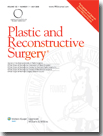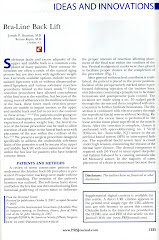Breast augmentation goes by many names. Commonly used terms include breast enhancement, breast enlargement, and of course boob job. All of these terms refer to the same basic idea of using an implant (or fat grafting in certain circumstances) to increase the size and improve the shape of breasts.
To understand breast augmentation it helps to brake it down into the type of implant, incision location, and level of tissue placement. The list of each is shown below and a more comprehensive discussion follows.
Implant types
Saline
Smooth shell
Textured
Silicone (gummy bear)
Smooth shell
Textured shell
Silicone (form stable)
Textured shell only
Fat
Incision location
Peri-areolar (at the border of the areola and breast skin)
Trans-axillary (through the arm pit)
Inframmamary (at the breast fold/under the breast)
Trans-umbilical (aka TUBA, through the belly button)
Placement
Sub-glandular (under the breast gland)
Sub-fascial (under the covering on top of the muscle)
Sub-pectoral (under the muscle)
The goal of any breast augmentation is to match the patients goal of what they want their breasts and body to look like. This is important because there is a wide range of patient desire regarding the aesthetic appearance of a breast. Some patients want very modest results, wishing to avoid any suspicion of that a cosmetic breast procedure was performed. On the other end of the scale there are patients who want the very largest breast possible, maximizing volume and cleavage. Of course, most patients fall somewhere in between. This issue of personal choice is important because it will guide the selection process of implant type, incision location, and placement.
Breast implant type
The most natural feeling breast implant type in my opinion as well as the opinion of my staff and patients are silicone (gumy bear type). Therefore, my preference for breast implant type is usually either textured silicone or smooth wall silicone. I always present the pros and cons of each implant type and allow the patient to decide. Most patients agree that silicone is the most natural to feel. With the reassurance that silicone implants are just as safe as saline implant, the majority of patients choose silicone. I will use saline implants in a handful of situations including patient preferrence, placement via the belly button (TUBA, see above), placement through a very small areola of a large final volume implant, and occassionaly placement of a large final volume implant via the arm pit (transaxillary). The reason for use of saline implants in these situations is simply that a silicone gel implant requires a slightly larger opening. The difference between smooth wall and textured wall breast implants is negligible. I often use textured for the potential added benefit of less scarring internally as well as a more even feel as the breast tissue and the implant tend to more together more as a result of the textured shell. The last type of breast implant is the form stable breast implant. This implant is also made of silicone gel but the gel is more cohesive and therefor slightly firmer in terms of feel. These implants are still restricted for "reconstructive" use, but periodically they are used for cosmetic breast augmentation by some plastic surgeons. They have a nice shape but are firmer. They also require a slightly larger incision than the gummy bear implants.
Incision location
The location of the incision for placement of the breast implant is determined by patient preference but also by implant type and implant size.
The inframmamary incision (breast fold incision) allows the surgeon a great deal of control and access to shape the breast. Both saline and silicone breast implants can be placed via the inframmamry incision.
The trans-axillary incision (through the arm pit) can be used with either the saline or silicone implant but larger silicone implants become exceedingly difficult to place via this incision and therefore implants larger than about 400cc placed via the arm pit will likely be saline. The arm pit incision can also offer good visualization for the surgeon when an endoscope is used.
The peri-areolar incision can be used with either saline or silicone breast implants. Again, if the areola is particularly small and/or the implant is particularly large it may be difficult to use a silicone implant. How small the areola is or how big the silicone implant is before saline implant must be used needs to be judged on a patient by patient basis. The peri-areolar incision is especially useful if the areola is to be made smaller during the same procedure or the breast will also be "lifted" (mastopexy) during the same procedure. The peri-areolar incision is almost always the incision of choice for female bodybuilders since that incision is the oncly incision always hidden during body building exibitions.
The trans-umbilical incision is always used with saline breast implants. It is very difficult, or nearly impossible to get a silicone implant through the belly button incision and up to the breast area, especially without the risk of damaging the implant.
Implant placement
As listed above, implants can be placed underneath the breast tissue, under the covering of the fascia on top of the muscle, or under the muscle. If saline implants are chosen and especially if the patient is very thin, the implant should be placed under the muscle. In all other circumstances, I recommend the placement of silicone implants underneath the fascia on top of the muscle. This accomplishes three things. First the recovery is significantly faster and easier. Most of the pain associated with breast augmentation is secondary to the muscle being cut. Placing the implant on top of the muscle avoids this issue and makes recovery much easier. The other benefit of placing the breast implant in the subfascial plane is that the breast will be softer earlier and when all of the healing has been completed. Finally, placing the breast implant in the subfascial plane avoides "breast animation". Breast animation is the term used to describe movement of the breast when the arms are used. Breast animation occurrs when the muscle is placed under the pectoralis muscle. When the arms are used during regular daily activities or excercise the pectoralis muscle is naturally activated. When the muscle moves the breast implants move, usually in an out and up direction. This can be quite dramatic at times and can be very bothersome and unattractive for the patient as well as the patients partner.
I hope this helps. More to come in the near future about breast augmentation.
All the best,








1 comment :
I recieved a breast augmentation from Dr. Repta and I love my new "Girlz" I wanted them to be soft and large and i got exactly what I wanted. I chose the gummy bear soft round and they are AMAZING. I could not have chosen a better Dr. Now my husband would just die if I asked him if I could do my lips next!
Post a Comment